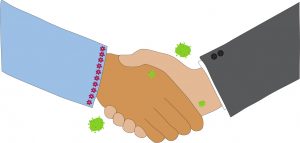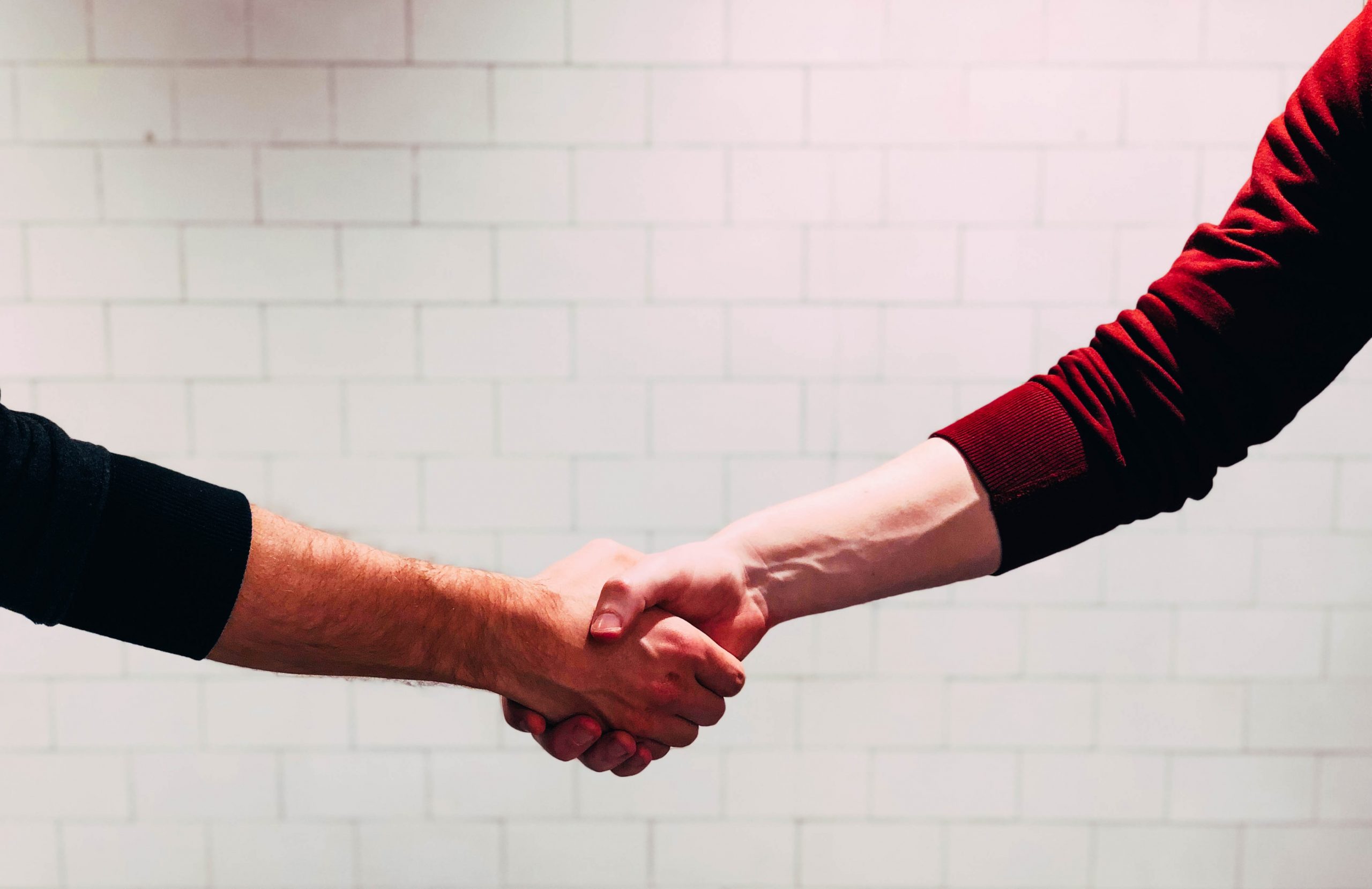What Will COVID-19 Change About Our Culture of Touching?
By Sami Roberts
In Ancient Greece, you would expose your hand when you greeted someone to show you didn’t have a weapon. And to really make sure the other person still wasn’t hiding one, you would shake their hand to see if anything fell out from up their sleeve. With that simple ritual, the cultural norm of shaking hands was born.
Flash forward some two-thousand years, and the handshake has suddenly become one of the greatest weapons of all. If you asked me last year, I would have shaken a stranger’s hand, no problem. If you asked me back in February of this year, I would have shaken a stranger’s hand and then applied a generous dollop of Purell. In early March, I had my first forearm bump, palms safely tucked in a fist. Now, the thought of touching someone’s hand feels like putting it directly into fire.
As the coronavirus spread to the US, two things I noticed were that I touched my face a lot, and more surprisingly, that we touch each other a lot too.
Anthony Fauci was quoted recently on a podcast saying, “I don’t think we should ever shake hands ever again, to be honest with you.” He believes the death of this societal mannerism would reduce the spread of other diseases aside from coronavirus, including the flu. In India, people have started returning to simply performing the Namaste gesture instead of shaking hands. In February, UAE citizens were encouraged not to rub noses while greeting each other. French leadership urged citizens to avoid kissing each other on the cheeks.
Touch is everywhere. It’s in the firm, “please-hire-me” handshake at the start of a job interview. It’s the “peace be with you” ritual at the end of Catholic Mass. It’s the high-five in sports and between friends. It’s the flailing, screaming, teenage girl hug. It’s the palm reader’s source of income.
It’s strange to think that a simple, two-thousand-year-old tradition would be gone in an instant. Of all the abrupt changes and sacrifices being made, this one seems like something we can accept. But if it feels oddly empty to greet a stranger, a friend, or a coworker without showing some kind of physical interaction, it might be an opportunity to brainstorm a new societal mannerism. It’s like choosing a new school mascot after hundreds of years of being the “Bears” or “Jaguars”—maybe it’s time to get creative.

Suggestions for alternatives are already floating around on the internet. A pat on the back, foot taps, the elbow bump. There is something compulsive about it—that we have to have something to replace the physical ways we acknowledge each other. Instead of just greeting each other verbally, there’s a need to have some kind of touch in place for it to feel okay.
Laurie Sloane, a New York-based therapist of over 30 years, can validate that: “As humans, we’re so driven by contact with each other. Touch is the basis of attachment when we’re born.”
Sloane describes that trauma in itself is “the lack of attachment.” She highlights one of the most blunt and painful ways the lack of contact is affecting society.
“What’s so terrible about this pandemic is that people are dying alone,” she said. “It’s terrible for the person who is dying, and it’s in some ways, even worse for the people who survive, because they can’t have this moment of closure together. They can’t touch, they can’t even communicate.”
Though she notes that there have been instances where healthcare workers have helped patients connect with their loved ones via FaceTime to say goodbye, it’s not enough, and it’s not the same.
Sloane has two therapy practices, one in Manhattan and one in Long Island, where she is currently quarantined with family. As expected, she is now seeing her clients over Zoom. While the technology makes these virtual sessions possible, Sloane can feel the lack of physical presence in her work. In person, Sloane says, she is able to “mirror a person—by mirror, I mean their facial cues, their gestures…matching them to some extent,” she said. “You just don’t have those cues over Zoom. As a therapist I have to work so much harder.” Sloane finds herself nodding and smiling to show that she is engaged with her clients, in ways that wouldn’t be necessary in person. These extra non-verbal cues through Zoom interactions, if anything, are preparing us for a bigger shift in how we interact.
“I think people are going to become much more reserved,” she said. “I think it’s going to take quite a while when this is truly over as a pandemic, for people to rebuild that sense of trust, body to body, and feel comfortable with each other.”
Sloane predicts that while the handshake and other forms of physical greeting won’t disappear entirely, people will have to adapt and strengthen their communication.
“I think they’re going to have to learn by necessity how to convey their point of view, what they’re thinking and feeling in ways that don’t incorporate touch,” she said. “Learning how to mirror people over technology, how to be more consciously impactful, and use words and facial expressions to communicate that.”
COVID-19 has changed our lives so drastically, but one thing we have proven is that no amount of distance will change our need to connect with each other. The real hurdle will be deciding if we can trust each other enough to get within 6 feet of a stranger.

